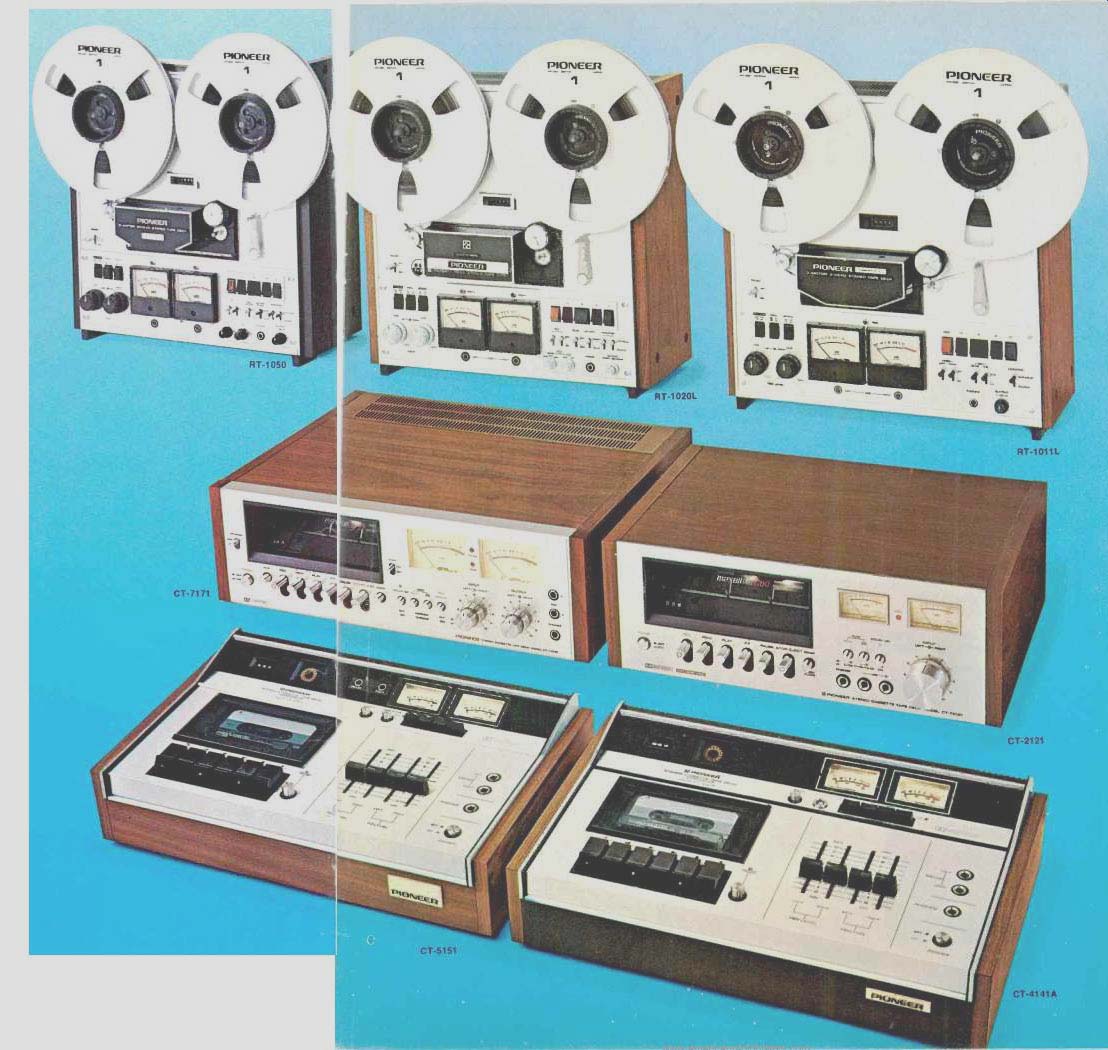
above: Bringing you the best of each is up to us.

above: Whether you use a cassette or open reel deck is up to you.
High fidelity is important to us at Pioneer. It's all we do and it's all we care about. We are excited that cassette tape decks have reached a level of performance that meet the highest standards. We are excited because we know that it means more enjoyment for you from your high fidelity system. We also know that you can now get more versatility and value out of your high fidelity system than ever before.
The great advances in cassette technology have had impact on the reel-to-reel tape deck concept as well. We believe that the era of the small, inexpensive 7-inch reel tape deck is past.
Neither its convenience nor its performance make it a good value compared to the new cassette technology. And it is now possible for Pioneer to offer you a professional, studio-quality 10 1/2-inch reel deck at prices that compare favorably with what you might expect from old fashioned 7-inch reel units. In our judgment the old ideas must move aside for the new ideas. And Pioneer has some very intelligent new ideas in tape for you.
The convenience of cassette. The performance of open-reel.
The new CT-9191, with built-in Dolby* establishes a new and incomparable level for cassette deck performance and features. Designed with up-front controls and cassette loading, you can stack other components above it or under it.
Performance features stack up, too.
Bias and equalization switches insure optimum recording and playback for every type of cassette tape made. There's even automatic bias/equalization switching when the new type Cr02 cassette, equipped with the special identifying notch, is inserted. A front panel indicator light signals this automatic operation.
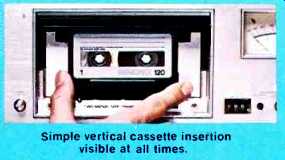
------Simple vertical cassette insertion visible at all times.
Distortion- and interference-free recordings are consistently produced, thanks to a combination of wide-scale range VU level meters (-40dB to +5dB), an LED peak level indicator light, a selectable level limiter circuit, and an FM multiplex filter switch.
Locating a desired program point in a cassette is simple with the new CT-9191. A specially designed memory rewind switch (including record/play automatic re-start) and 3-digit tape counter, make precision cueing a breeze.
Operation is further simplified with automatic tape-end stop, dual concentric rotary mic and line input controls for mic and line mixing and separate rotary output level controls, all with adjustable memory index markers. In addition, there are soft-touch solenoid operated transport controls. This combination makes the 9191 the recording studio that fits on a shelf.
Two independent drive motors, plus solid ferrite record/playback heads combine to provide a new low in wow and flutter (0.07% WRMS) and a new high in frequency response (20 to 17,000 Hz; Cr02 tape).
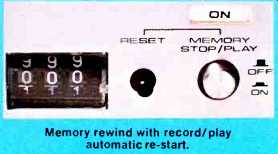
-----Memory rewind with record/play automatic re-start.
Whether you choose the ultra sophistication of the CT-9191 or Pioneer's other front loaders CT-7171, CT-6161, CT-2121, or the top loading CT-5151 and CT-4141A, which snare many of its features, you're assured optimum performance and maximum value in their respective price ranges. One tradition that never changes at Pioneer.
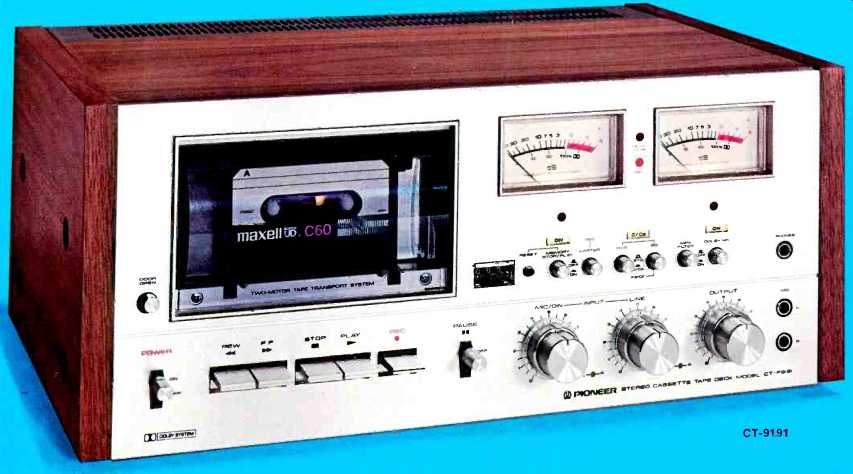
Open-reel. A professional recording studio in your home.
Professionalism comes with all four studio-quality open-reel models. The RT-1020L (7 1/2, 3 3/4 ips) is unequalled in 4-track units. With three motors and three heads, it has virtually every professional feature you'd want. Yet it's extremely simple to use. In addition to stereo record/playback, it also highlights 4 channel playback. The RT-1020H (15, 7 1/2 ips) is the high speed counterpart of the RT-1020L. While the RT-1011 L shares most of the features of the RT-1020 series, it does not include 4-channel playback.
The complete extent of their capabilities becomes apparent only after you've worked with them. Then you'll recognize the magnitude of Pioneer's accomplishment.
The RT-1050 is a 2-track, 2-speed (15, 7 1/2 ips) 3-head deck which, like all Pioneer models, can handle professional 10 1/2-inch tape reels. Its unique combination of bias and equalization switching controls give 12 different settings to optimize the performance of any tape on the market.
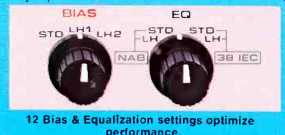
------12 Bias & Equalization settings optimize performance.
The RT-1050's 3-motor transport system is activated electronically by full logic, solid state circuitry, triggered by feather touch pushbutton controls. Its transport is completely jam- and spill-proof, permitting you to switch from Fast Forward to Fast Rewind, bypassing the Stop button.

----Pick The Cassette Features You Need

----Pick The Open-Reel Features You Need
The RT-1050 was specifically designed for easy operation with a wide combination of professional features like extended linearity VU meters with adjustable sensitivity, mic/line mixing, pushbutton speed selection and reel tension adjustment buttons. There's also an exclusively designed pause control, and independent control of left and right recording tracks.
The same 2-track recording system studios use for better signal-to-noise ratios and higher dynamic range is incorporated into the RT-1050. Yet it can be easily converted to 4-track use with an optional plug-in head assembly. Everything considered, it's the most versatile open-reel deck you can buy. Professionals prefer it for its studio-quality performance.
Everyone appreciates its completely simple operation.
Pioneer open-reel and cassette decks are built with the same outstanding quality, precision and performance of all Pioneer high fidelity components. That's why, whichever you choose, you know it's completely professional and indisputably the finest value ever in a studio-quality tape deck.
U.S. Pioneer Electronics Corp., 75 Oxford Drive, Moonachie, New Jersey, 07074.
West: 13300 S. Estrella, Los Angeles 90248 / Midwest: 1500 Greenleaf, Elk Grove Village, Ill. 60007
(Source: Audio magazine, Aug 1975)
Compare to: Sony tape decks (Aug. 1975)
Also see: Pioneer tape decks (May 1975)
Pioneer turtables (June 1975); Pioneer RT-707 open-reel tape recorder (Jan. 1978)
Philips turntables (Aug. 1975)
= = = =